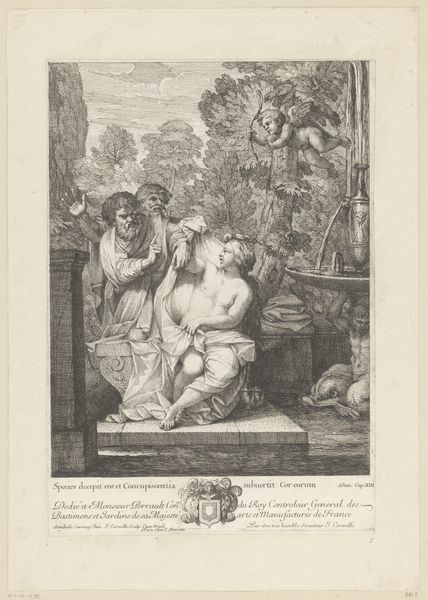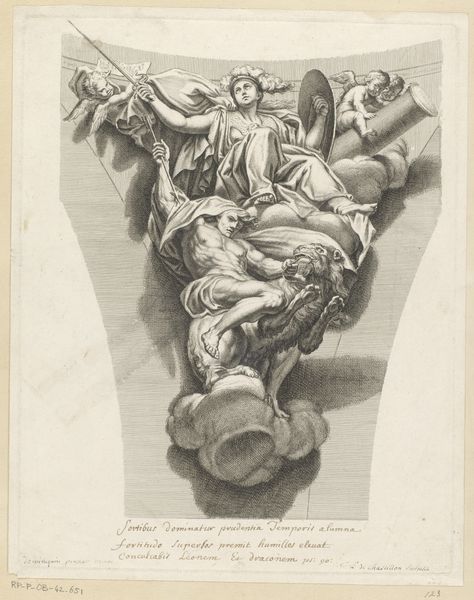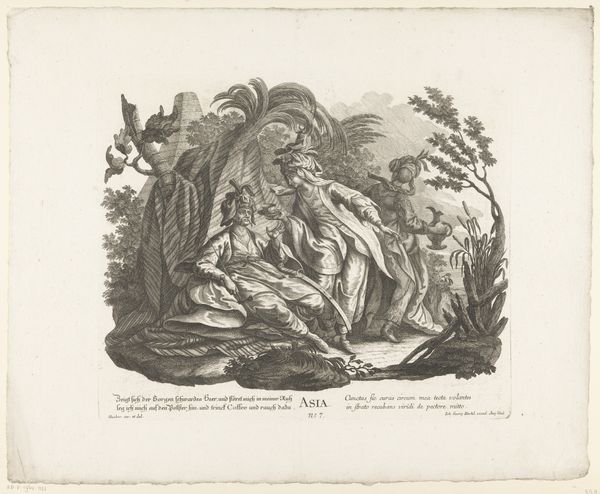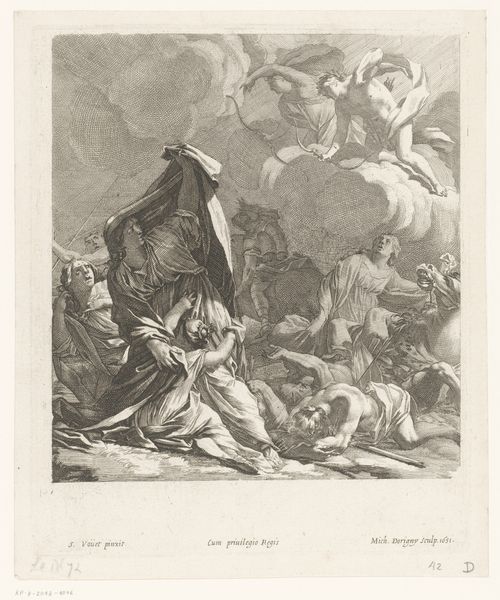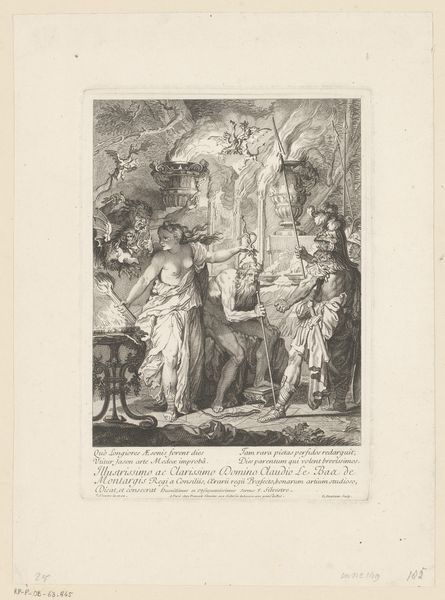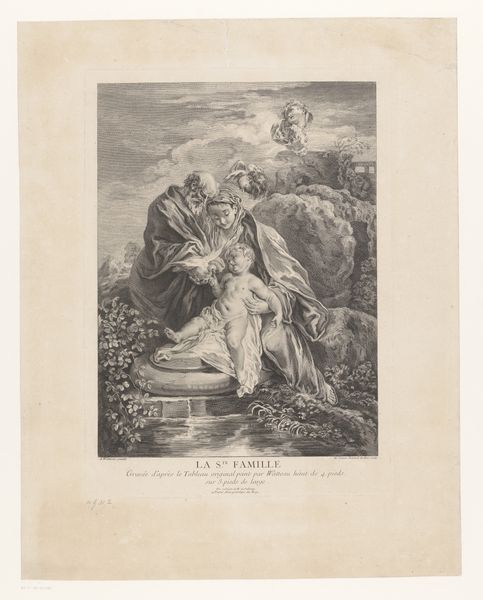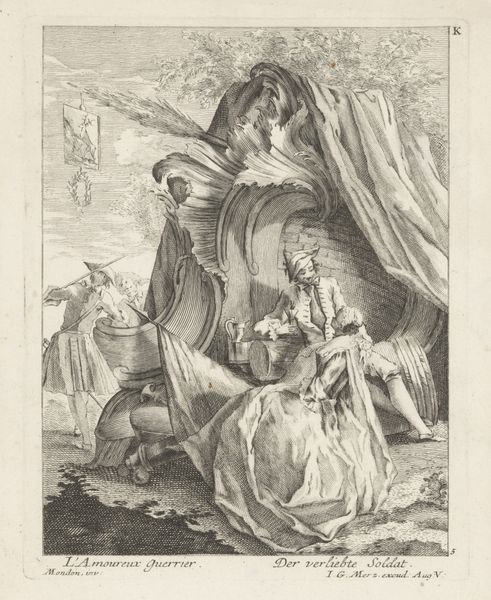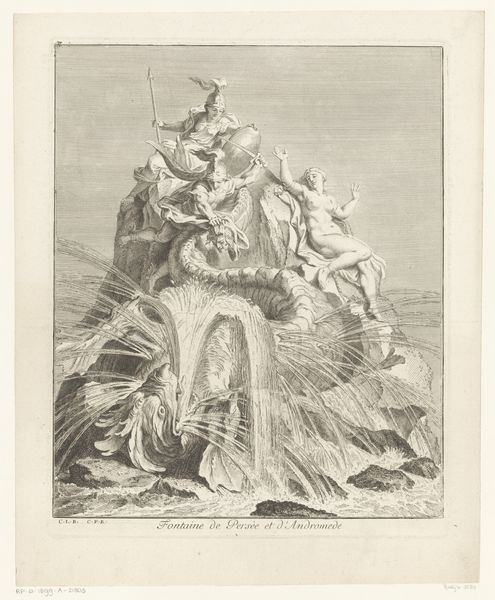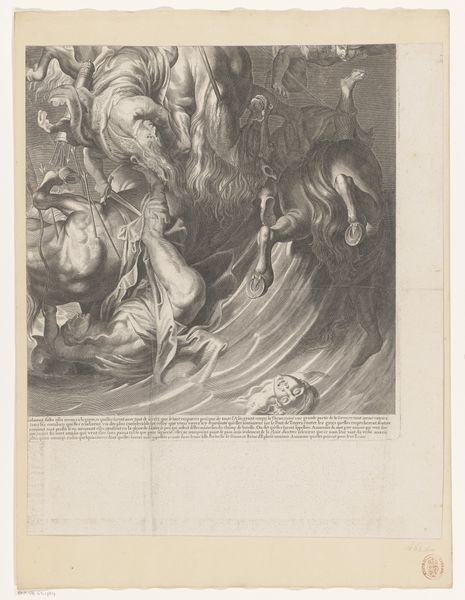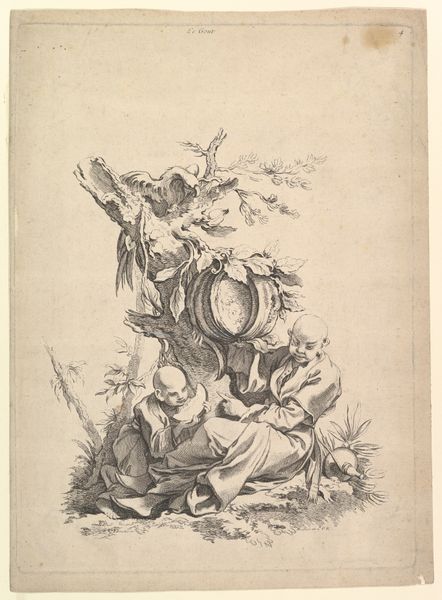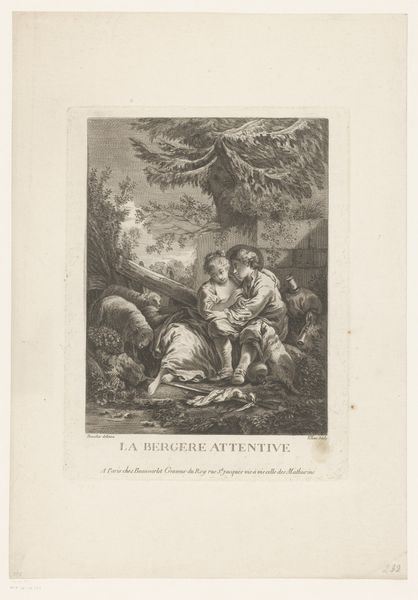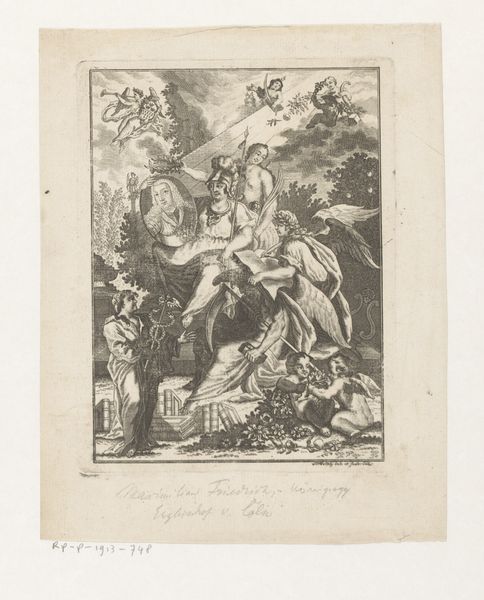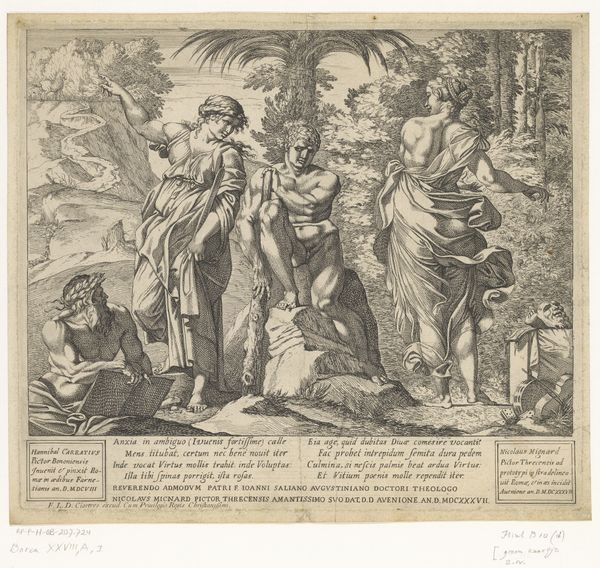
print, engraving
#
baroque
# print
#
old engraving style
#
classical-realism
#
figuration
#
form
#
ancient-mediterranean
#
line
#
history-painting
#
engraving
Dimensions: height 352 mm, width 250 mm
Copyright: Rijks Museum: Open Domain
Curator: Let's consider "Antique Fragments" by Gottlieb Friedrich Riedel, created sometime between 1734 and 1784. It's an engraving. What strikes you initially? Editor: Well, a first glance says: fragmentation, definitely! But, interestingly, each section seems meticulously rendered. The fine lines create a palpable sense of texture, almost as if you could feel the cool marble of the statues. The piece has an airy quality to it too, it sort of breathes, don’t you think? Curator: Precisely! The work’s power resides in juxtaposing the classical ideal with the inevitable decay that time inflicts. Each "fragment" presents us with different aspects of ancient artistic expression, skillfully composed as though remnants found during an archaeological dig. It begs a reading as the passage of civilizations and their cultural remnants. Editor: I agree about that archaeological feeling. Considering Riedel's process, how fascinating that an engraving--itself a process of reproduction and multiplication—can point us back to unique objects, classical sculptures. Look at the precision needed to create these lines. The labor that mirrors the artistry in creating the sculptures being depicted. It becomes about how knowledge and aesthetics are transferred through materials and human effort, both in the original carvings and the later printed copies. Curator: Absolutely. Notice how the artist arranged those figures! Two women seated together, seemingly embracing; then another, perhaps in mourning, attending to a skull. And of course, the broken torso. What could these arrangements signify? Perhaps it's Riedel’s quiet lament on how all great empires and creations are destined to crumble back into earth. Editor: Or maybe it shows that only fragments survive. Each of these components offers its piece. Perhaps by only granting pieces it ensures all interpreters engage with the act of construction: taking mere components, giving all interpreters an active role with how they imagine that prior, unified image to appear. Even something incomplete, if crafted with such devotion, speaks volumes about humanity’s artistic journey. Curator: What a thought: our shared human condition through art – eternal inspiration interwoven with mortality. That’s what I take from it at the end, yes.
Comments
No comments
Be the first to comment and join the conversation on the ultimate creative platform.
